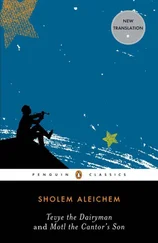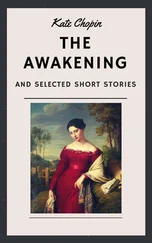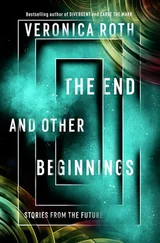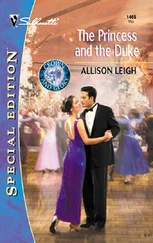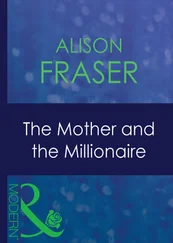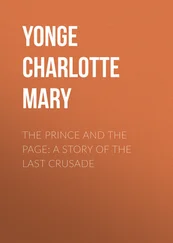Confinement to the Pale of Settlement, however, was not the worst of Russian Jewry’s problems. Far more onerous was the fact that within the Pale itself, where most Jews lived in grinding poverty, they were discriminated against at every turn by an imperial administration that, lacking Pobyedonostzev’s inclusive vision, could never quite make up its mind whether it wished to starve them or assimilate them, and so alternated between the most oppressive features of both approaches. Jews were excluded from local councils and trade guilds, even in towns where they formed a majority of the inhabitants. They were made to pay special and frequently humiliating taxes — a head tax, a property tax, a tax on the slaughter of kosher meat, a tax on Sabbath candles, a tax on the right to wear their traditional clothes. They were barred at different times and places from a wide range of occupations — law, agriculture, tavern keeping, the production and sale of liquor, the retailing of manufactured articles, the employment of their wives as market vendors. They were harassed in the education of their children, now forced to send them to Russianizing schools and now confronted with a system of quotas that made a Russian schooling almost impossible. And they were subjected to especially harsh draft laws, being inducted into the army in higher percentages and for longer terms of service than other sectors of the population. This last affliction reached a horrendous extreme in the reign of Nicholas I, who decreed in 1827 that an annual number of Jewish boys aged twelve and up should be taken to the army for premilitary training until they turned eighteen, at which time they were to be drafted for twenty-five years. These “cantonists,” as the unfortunate children were called, rarely saw their homes again, and until its abolition by Alexander II in 1856, the institution of juvenile conscription struck terror into the hearts of Jewish families. Extortionate bribery, child snatching, and the physical mutilation of one’s sons were some of the measures employed to ensure that the boy taken to the army was not one’s own.
Under Alexander II, whose liberalizing tendencies were most prominently expressed by his emancipation of the Russian serfs, the condition of the Jews improved too; some of the discriminatory legislation against them was relaxed, and a more thorough removal of the rest was contemplated. Yet even before Alexander’s assassination in 1881 by a bomb-throwing revolutionary, further progress had become mired in a welter of indecisive commissions of inquiry, and with the succession of his son, Alexander III, the anti-Jewish outlook of former years was revived with fresh vigor. There was now, moreover, a new factor that made this policy more brutal than ever: the desire to blame the Jews for the growing revolutionary movement, thus simultaneously discrediting the revolutionaries by painting them as Jewish conspirators, and deflecting the grievances of the Russian peasantry and working class from the government to the Jews. For the first time, government persecution of the Jews ceased to be a simple matter of social and economic containment and became a political tool. An idea of the cynical cruelty with which this tool was wielded can be gained even from an abbreviated chronology of the rash of anti-Semitic decrees and outbreaks that followed in the next several years:
1881/ Government-incited pogroms in Yelisavetograd, Kiev, and elsewhere in the Ukraine, as well as in Warsaw; the government officially blames them on Jewish economic exploitation of the masses, which have been driven to exact their just revenge.
1882/ Jews are again forbidden to settle in any of the rural sections of the Pale of Settlement (that is, in ninety percent of its area) or to buy property there. Jews already living in the villages are made subject to expulsion if they do not own their homes, if they move from village to village, or if they are absent from the village they live in for even a few days.
1883/ Pogroms in Rostov-on-Don; thousands of Jews living illegally in St. Petersburg are rounded up by the police and expelled.
1884/ Pogrom in Nizhni-Novgorod.
1887/ All high schools and universities within the Pale of Settlement (where Jews, though roughly a tenth of the inhabitants, form a majority of the literate population) are limited to a Jewish quota of ten percent of their student bodies.
1890/ Numerous towns in the Pale are reclassified as villages, from which Jews are therefore expelled; Jews are disqualified throughout the Pale of Settlement from voting for deputies in local elections.
1891/ Twenty thousand Jews are expelled from Moscow.
1894/ Jews are forbidden to change their names to non-Jewish ones; Jewish identity passes are marked with the word “Jew.”
1899–1900/ More pogroms in the Ukraine; in Vilna a Jew is put on trial on the atavistic charge of attempting to murder a Christian girl in order to bake Passover matsoh from her blood. (This medieval “blood libel” was to be repeated in 1911 in the more famous case of Mendel Beilis, which attracted worldwide attention.)
1903/ The worst pogrom yet in Kishinev; forty-five Jews killed, eighty-six severely wounded, fifteen hundred Jewish houses and stores looted and demolished. Pogrom in Homel; when Jews try for the first time to defend themselves with arms, thirty-six are indicted for attacking Christians.
1904/ Outbreak of the Russo-Japanese war; Jews are called up in disproportionate numbers; the number of Jewish soldiers sent to the front is also disproportionately large.
Even the popular-backed Revolution of 1905, which broke out in the aftermath of Russia’s defeat by Japan and led Nicholas II to grant a short-lived liberal constitution that aroused, among other things, extravagant hopes of a new age for Russia’s Jews, only ended in the further shedding of Jewish blood: the ink on the constitutional manifesto had hardly dried when gangs of counterrevolutionary thugs known as “the Black Hundreds,” organized with the complicity of the Czarist police, attacked Jewish neighborhoods all over Russia under the cover of nationalist slogans holding the Jews responsible for the country’s troubles and accusing them of subverting the authority of the Czar in order to seize power themselves. The worst of these pogroms took place in Odessa, where over three hundred Jews were killed, thousands injured, and tens of thousands left homeless. Another that occurred in Kiev was witnessed by Sholem Aleichem himself from the window of the hotel in which he had taken refuge with his family. Soon afterward he left Russia, never to return again except for brief visits until his death in New York in 1916.
In taking his departure, of course, Sholem Aleichem was joining a flood of Jews heading westward; it is estimated that between 1881 and 1914, when World War I shut the gates of emigration, nearly three million Jews left the Russian Empire, mostly for the United States. This mass flight, however, only partially relieved congestion within the Pale itself, both because of a high birthrate and because economic pressures and the rural expulsions led to an internal migration of Jews to the crowded quarters of the larger towns, where mass proletarization took place. Despairing of a future under the Czarist regime, many young Jews turned to the revolutionary movement. If at the time of Alexander II’s assassination the specter of Jewish insurrectionism had been largely a red herring, by the first decade of the twentieth century it was an unassailable fact. Jews were active in large numbers in the two major underground parties, the Social Revolutionaries and the Social Democrats, and in 1897 they formed a clandestine Marxist organization of their own, the League of Jewish Workingmen, or “Bund.” Jewish youth that was not politically active was becoming modernized too, so that a yawning gap developed between an older generation that still clung to the traditional ways and a younger one that was rapidly forsaking them. Russian began to displace Yiddish in daily speech (it is an astounding symptom of the times that Sholem Aleichem himself spoke Russian to his wife and children!) and the medieval culture of Orthodox Judaism that had remained intact for centuries was in the process of crumbling. Everywhere, battered from without and eroded from within, Jewish life was in a state of flux, disarray, decomposition.
Читать дальше


